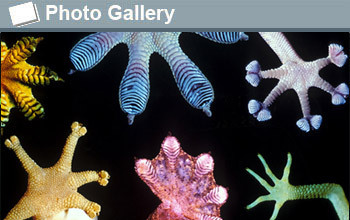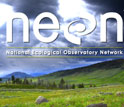This artist's conception shows the object named
WISE J085510.83-071442.5, the coldest known brown dwarf. This cool star-like
body is as frosty as the North Pole (or between minus 54 and 9 degrees
Fahrenheit). It is also the fourth closest system to our sun, at 7.2 light-years
from Earth.
Image Credit: Penn State University/NASA/JPL-Caltech
NASA's Wide-field Infrared Survey Explorer (WISE) and Spitzer Space Telescope
have discovered what appears to be the coldest "brown dwarf" known -- a dim,
star-like body that, surprisingly, is as frosty as Earth's North Pole.
Images from the space telescopes also pinpointed the object's distance to 7.2
light-years away, earning it the title for fourth closest system to our sun. The
closest system, a trio of stars, is Alpha Centauri, at about 4 light-years
away.
"It's very exciting to discover a new neighbor of our solar system that is so
close," said Kevin Luhman, an astronomer at Pennsylvania State University's
Center for Exoplanets and Habitable Worlds, University Park. "And given its
extreme temperature, it should tell us a lot about the atmospheres of planets,
which often have similarly cold temperatures."
Brown dwarfs start their lives like stars, as collapsing balls of gas, but
they lack the mass to burn nuclear fuel and radiate starlight. The newfound
coldest brown dwarf is named WISE J085510.83-071442.5. It has a chilly
temperature between minus 54 and 9 degrees Fahrenheit (minus 48 to minus 13
degrees Celsius). Previous record holders for coldest brown dwarfs, also found
by WISE and Spitzer, were about room temperature.
WISE was able to spot the rare object because it surveyed the entire sky
twice in infrared light, observing some areas up to three times. Cool objects
like brown dwarfs can be invisible when viewed by visible-light telescopes, but
their thermal glow -- even if feeble -- stands out in infrared light. In
addition, the closer a body, the more it appears to move in images taken months
apart. Airplanes are a good example of this effect: a closer, low-flying plane
will appear to fly overhead more rapidly than a high-flying one.
"This object appeared to move really fast in the WISE data," said Luhman.
"That told us it was something special."
After noticing the fast motion of WISE J085510.83-071442.5 in March, 2013,
Luhman spent time analyzing additional images taken with Spitzer and the Gemini
South telescope on Cerro Pachon in Chile. Spitzer's infrared observations helped
determine the frosty temperature of the brown dwarf. Combined detections from
WISE and Spitzer, taken from different positions around the sun, enabled the
measurement of its distance through the parallax effect. This is the same
principle that explains why your finger, when held out right in front of you,
appears to jump from side to side when you alternate left- and right-eye
views.
"It is remarkable that even after many decades of studying the sky, we still
do not have a complete inventory of the sun's nearest neighbors," said Michael
Werner, the project scientist for Spitzer at NASA's Jet Propulsion Laboratory
(JPL) in Pasadena, Calif. JPL manages and operates Spitzer. "This exciting new
result demonstrates the power of exploring the universe using new tools, such as
the infrared eyes of WISE and Spitzer."
WISE J085510.83-071442.5 is estimated to be 3 to 10 times the mass of
Jupiter. With such a low mass, it could be a gas giant similar to Jupiter that
was ejected from its star system. But scientists estimate it is probably a brown
dwarf rather than a planet since brown dwarfs are known to be fairly common. If
so, it is one of the least massive brown dwarfs known.
In March of 2013, Luhman's analysis of the images from WISE uncovered a pair
of much warmer brown dwarfs at a distance of 6.5 light years, making that system
the third closest to the sun. His search for rapidly moving bodies also
demonstrated that the outer solar system probably does not contain a large,
undiscovered planet, which has been referred to as "Planet X" or "Nemesis."
For more information on NASA's WISE mission, visit:
NASA
Guillermo Gonzalo Sánchez Achutegui






